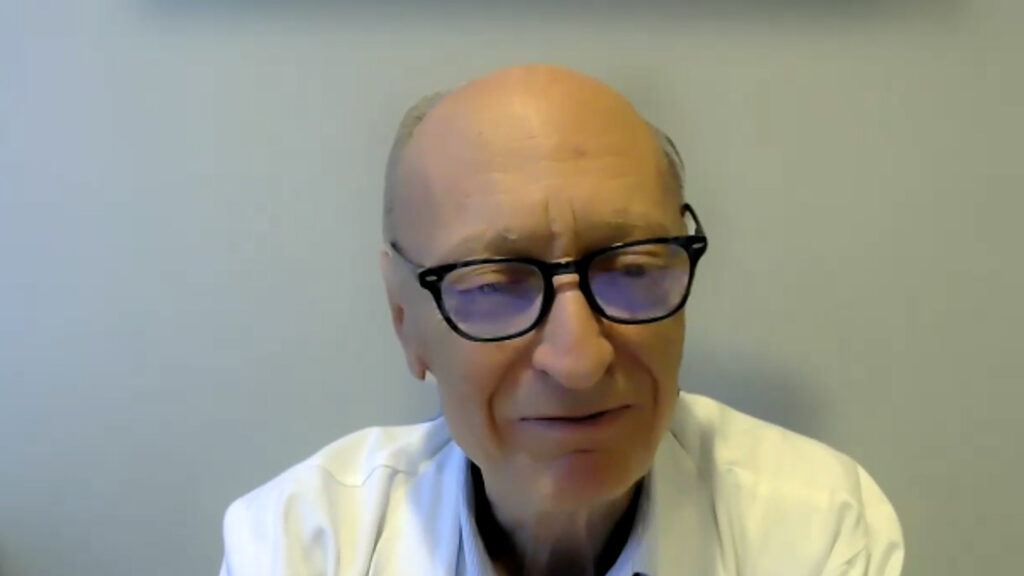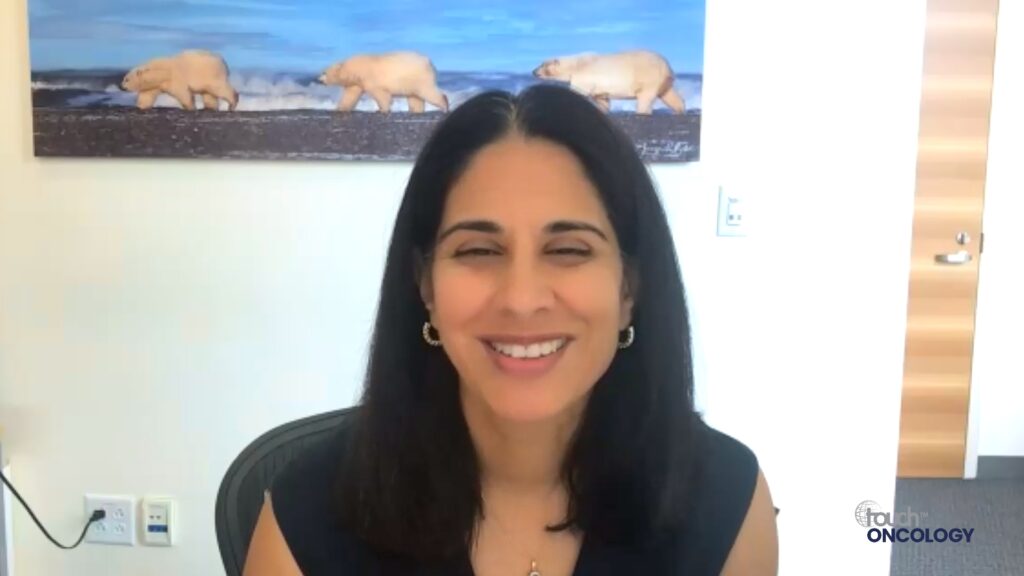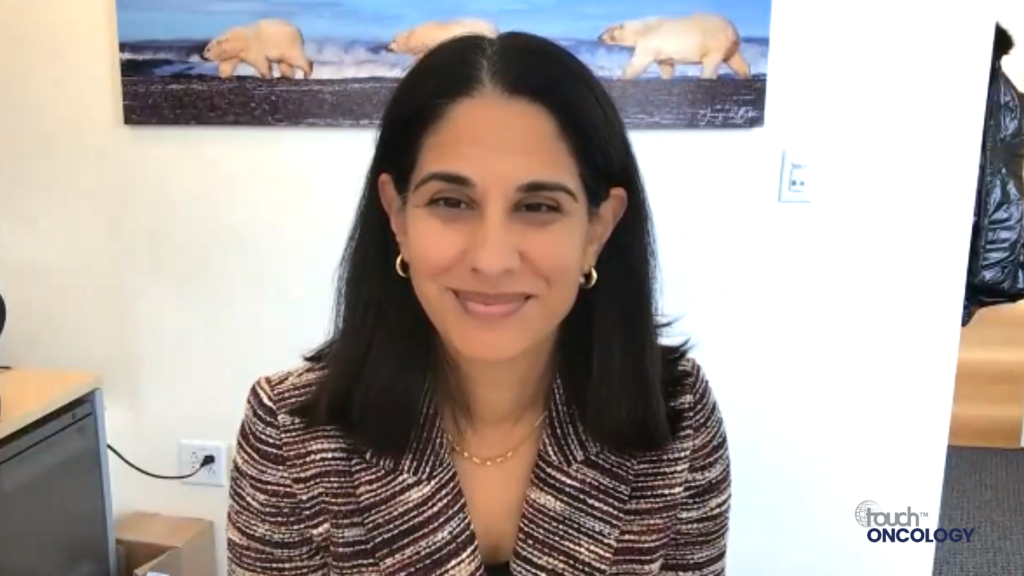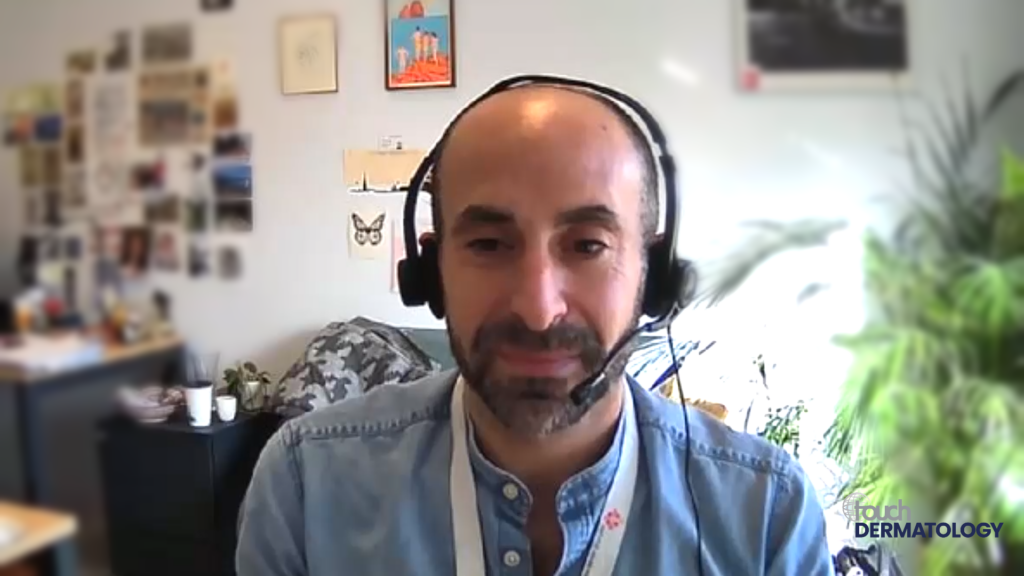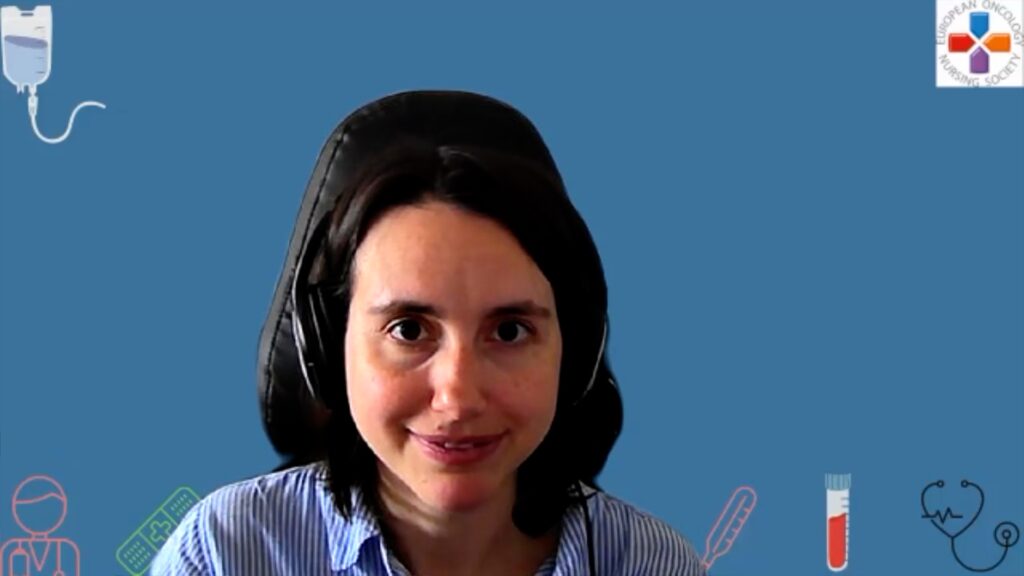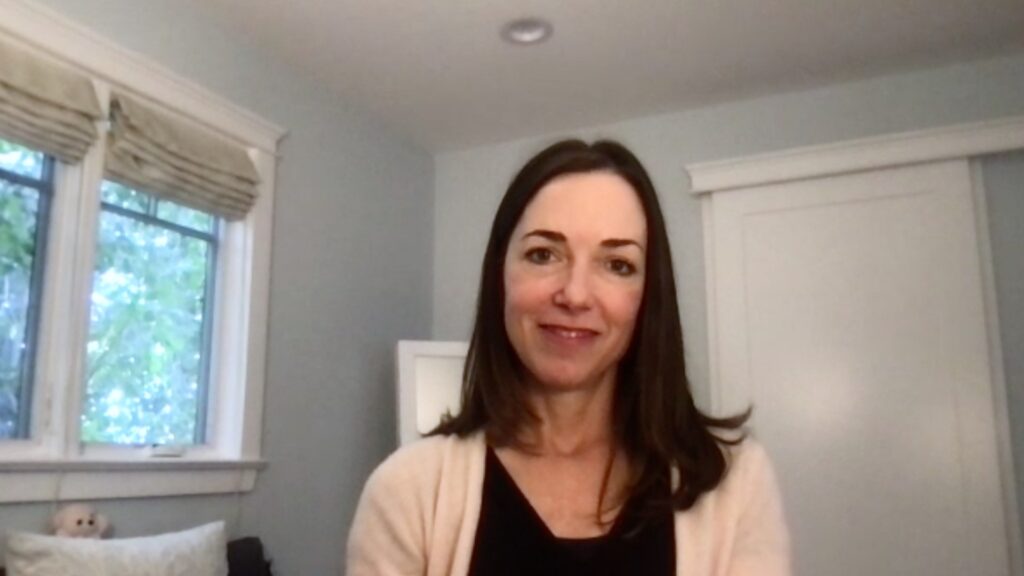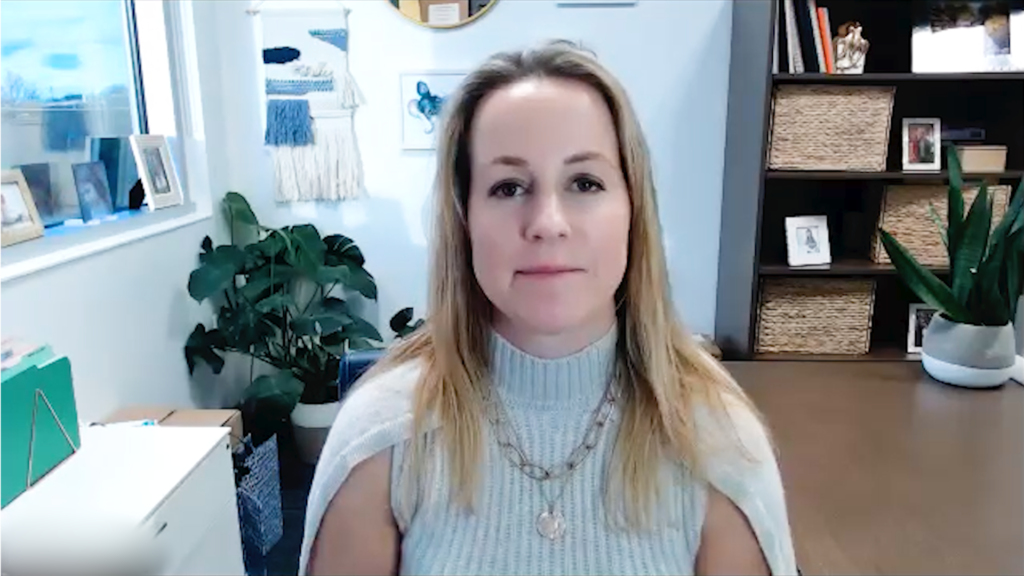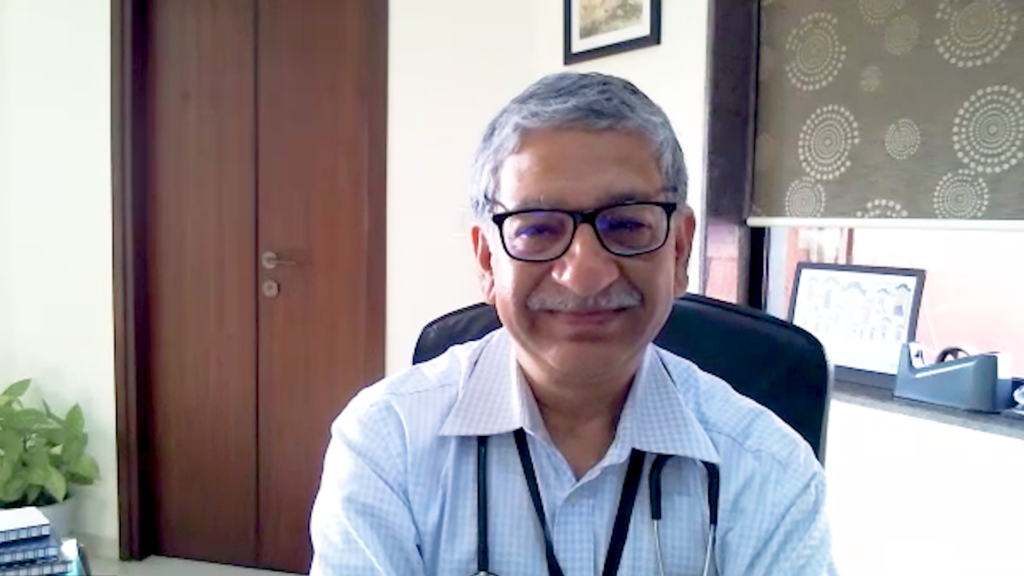The APT trial investigates adjuvant paclitaxel and trastuzumab in patients with node negative HER2+ breast cancer. Dr Sara Tolaney (Harvard Medical School, Boston, MA, USA) discusses the end-of-study, 10-year survival outcome results and explore what the study has demonstrated in terms of the role of the HER2DX genomic assay in predicting long-term outcomes (NCT00542451).
The abstract entitled ‘Adjuvant Paclitaxel and Trastuzumab Trial (APT) for Node-Negative, Human Epidermal Growth Factor Receptor 2–Positive (HER2+) Breast Cancer: final 10-year analysis’ was presented at San Antonio Breast Cancer Symposium (SABCS), 06–10, December, 2022.
Questions:
- What are the unmet needs in the treatment of women with node negative HER2+ breast cancer? (0:10)
- What did the APT trial teach us about the efficacy and safety of adjuvant paclitaxel and trastuzumab in this indication? (1:13)
- How useful was the HER2DX genomic assay in assessing the risk of recurrence? (3:02)
- What are your key take-home messages from this study? (5:41)
Full transcript below
Disclosures: Sara Tolaney is a consultant for Novartis, Pfizer, Merck, Eli Lilly, AstraZeneca, Genentech/Roche, Eisai, Sanofi, Bristol Myers Squibb, Seattle Genetics, Odonate Therapeutics, CytomX Therapeutics, Daiichi Sankyo, Athenex, Gilead, Mersana, Certara, Ellipses Pharma, 4D Pharma, OncoSec Medical Inc., BeyondSpring Pharmaceuticals, OncXerna, Zymeworks, Zentalis, Blueprint Medicines, Reveal Genomics, ARC Therapeutics, Infinity Therapeutics, Chugai Pharmaceuticals, Myovant, Zetagen, Umoja Biopharma, Menarini/Stemline, Aadi Biopharma and Bayer and discloses grant/research support from Genentech/Roche, Merck, Exelixis, Pfizer, Lilly, Novartis, Bristol Myers Squibb, Eisai, AstraZeneca, NanoString Technologies, Cyclacel, Nektar, Gilead, Sanofi and Seattle Genetics.
Support: Interview and filming supported by Touch Medical Media. Interview conducted by Gina Furnival
Filmed as a highlight of SABCS 2022
Access more content on Breast Cancer
Transcript:
What are the unmet needs in the treatment of women with node negative HER2+ breast cancer? (0:10)
My name is Dr Sara Tolaney. I’m a breast medical oncologist at Dana-Farber Cancer Institute, Boston, MA, USA.
While we know that trastuzumab has added tremendous benefits to patients with early stage HER2+ breast cancer, the original pivotal trials that examined the benefits of trastuzumab in this setting had predominantly excluded those patients who had smaller node negative HER2+ cancers. That’s been a challenge for us because when we look back, for example, at historical series that have looked at untreated patients with node negative HER2+ cancers, unfortunately they’re still at risk for recurrence. Untreated patients can have a risk as high as 20-25%, even with stage one HER2+ cancer, suggesting these patients do need systemic therapy, and yet pivotal studies had excluded them. So our trial group (APT trial) had felt it was important to examine how to optimally treat this group of early stage patients.
What did the APT trial teach us about the efficacy and safety of adjuvant paclitaxel and trastuzumab in this indication? (1:13)
The APT trial looked at an abbreviated chemotherapy regimen. Some patients received paclitaxel with trastuzumab for 12 weeks and then nine months of trastuzumab therapies for a year of treatment in a single arm trial. This was not a randomized study, and we tried to show that if we give this regimen, did we see a clinically acceptable outcome, and certainly a better outcome than what we would have seen in an untreated patient population. We’ve previously reported data from this study initially with three years of follow up, then with seven years of bulk, and now it is at a 10 year follow up. We have recently presented the official 10 year analysis from the APT trial. It showed that at 10 years, with a median of 10 years of follow up, there were very few recurrences. If you look at, for example, the invasive disease, free survival at 10 years is around 91%. But what is really important to note is if you look at recurrence free interval, it’s over 96%, and there are only six distant recurrences. And so very importantly, when you look at a relatively lower risk population, people can have other events that count as invasive disease free survival events, and therefore die for other reasons. For example, they can develop new contralateral breast cancers that are unrelated to their initial cancer. Therefore, I think recurrence free interval is probably a better way to look at these lower risk de-escalation trials. Resulting data with over 96%, R5 and only six events, confirms that the regimen should be a standard option for the majority of our patients with stage one cancers.
How useful was the HER2DX genomic assay in assessing the risk of recurrence? (3:02)
We were looking to see if there was a biomarker assay that could help us, similar to those patients who were likely to recur on the regimen compared to those patients who had excellent outcomes. The HER2DXS assay, based on gene expression of the tumour has been found to show multiple benefits in other studies. The HER2DXS assay can predict PCR, and it can also predict prognosis in someone with a HER2+ cancer. It in fact gives you three different scores: PCR probability, prognostic information and ERBB2 score. Due to this being an adjuvant trial, the PCR score isn’t so relevant here, but what we were looking at was a prognostic score. There is a cutoff with this assay, and people above 50 have high risk, and people below 50 tend to have low risk. So you could see that when you looked at this score as a continuous number, that it very much correlated with outcomes in this study. It also showed people who had high scores were more likely to recur than people with low scores. We also tried to develop a more optimal point with this assay in this particular stage one population. Therefore, we did look at a different cutoff, different than the one that’s standardly been utilized, and found that it was even better able to predict outcomes.
I think these data are very intriguing and it is an important step towards personalized therapy for early stage patients. Certainly it needs validation, but the ultimate goal that I’d like to see is the use of a biomarker assay like this to help us predict outcomes in the future. Especially in those who might not need systemic therapy because their prognosis is just so good, and especially in small, and super small HER2+ tumours where they might not require systemic treatment, and in patients where TH is perfect for them, and using it will lead to them being cured of their breast cancer. In addition, being able to select those super high risk patients where maybe TH isn’t adequate enough for them, potentially those are the patients we need to escalate to more standard regimens. I think there is more work to come with this, but it’s a very important step because we haven’t really been looking at biology, we’ve just been looking at clinical pathologic risk, which we know is not enough. As we get more and more HER2 directed therapies in the early disease space, I think we are going to need a way to personalize treatment to give the patient the right amount of therapy.
What are your key take-home messages from this study? (5:41)
So I think what we’re seeing now with 10 years of follow up from the APT trial is very low risk of recurrence with the age regimen for a stage one HER2+ population with only six distant events, suggesting that TH is a very reasonable treatment option for the majority of stage one patients, and that we have some promising biomarker assays like HER2DX, which hopefully will help us better personalize therapy for these patients in the future.
Subtitles and transcript are autogenerated



